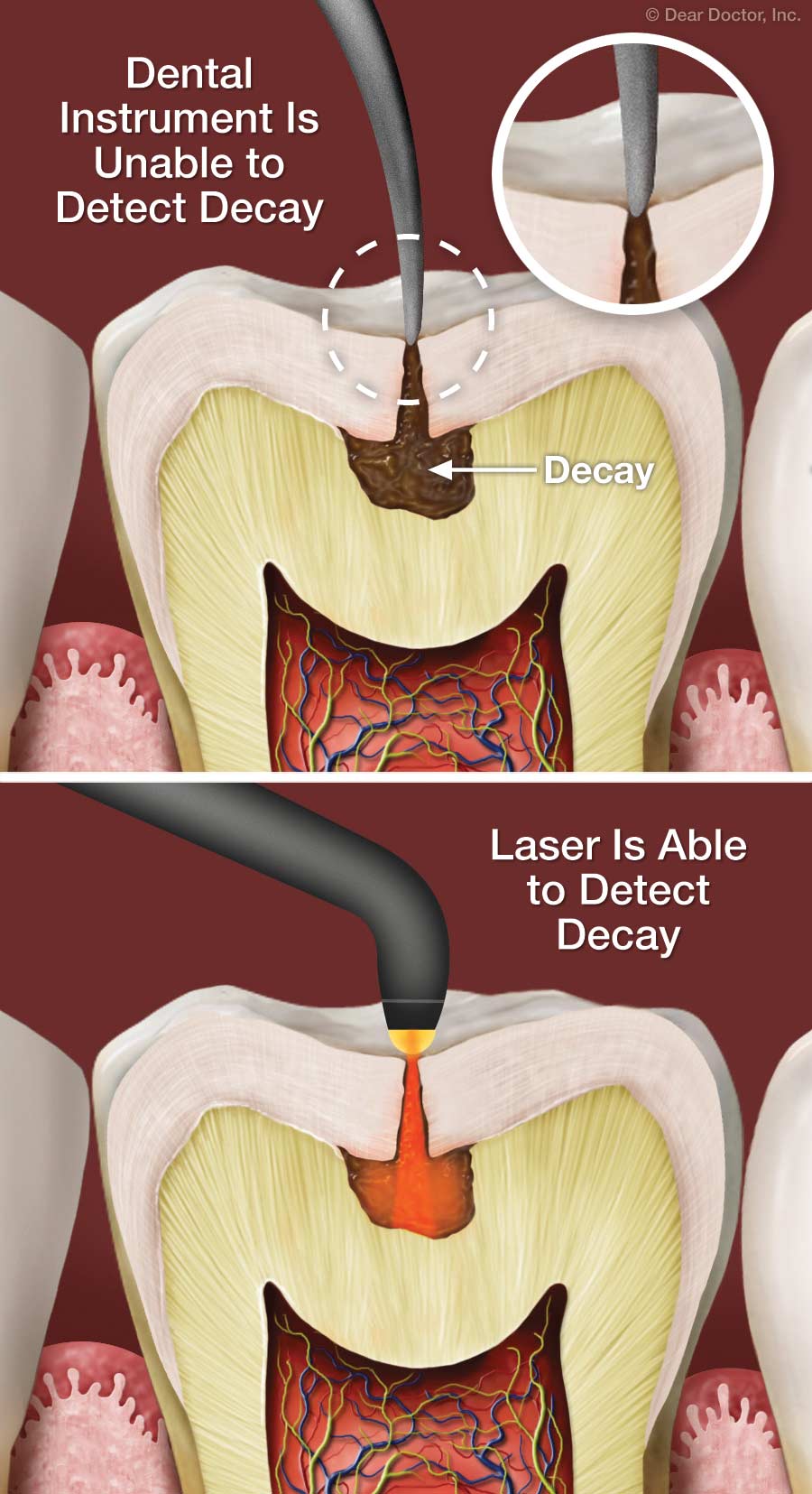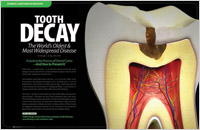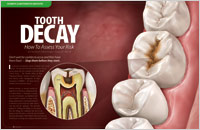 Laser technology is becoming quite commonplace in a wide variety of areas throughout the healthcare industry; however, are you aware that we can now use it to detect tooth decay? The truth is that using a small, handheld device, we can detect tooth decay that is not yet visible and would otherwise be undiagnosed by conventional methods alone.
Laser technology is becoming quite commonplace in a wide variety of areas throughout the healthcare industry; however, are you aware that we can now use it to detect tooth decay? The truth is that using a small, handheld device, we can detect tooth decay that is not yet visible and would otherwise be undiagnosed by conventional methods alone.
In fact, traditional methods of detecting tooth decay are much more accurate and efficient when used in conjuction with laser technology. You can expect:
- dramatically improved early cavity detection
- reduced size and possibly number of fillings that might be needed, thus possibly lowering the cost of dental treatments
- reduced chances of unnecessary exploration of teeth that are suspected to have cavities
Here's how it works
Using this noninvasive technology, we scan your teeth to examine your tooth structure. Laser cavity detection is based on the fact that healthy tooth structure absorbs and emits light, or “fluoresces,” differently than does decayed tooth structure. Healthy teeth will have little-to-no fluorescence while teeth with decay display with a higher level of fluorescence. And the higher the fluorescence, the more advanced the tooth decay. Once we complete the scan, the fluorescence readings are converted into a digital numeric output. You will also “hear” when you have decay present, as changes in fluorescence and numeric value are emitted as an audio signal that goes up in tone as it denotes the presence of decay.
Why is this so important?
Today, it may be more difficult to detect tooth decay thanks to improved oral hygiene, the use of fluoridated toothpaste, and the mass-consumption of fluoridated tap water. While the field of dentistry has recognized fluoride as an indispensible tool for protecting teeth by hardening enamel, it is this same fluoride that has hardened tooth enamel so much that it can conceal even aggressive decay because of increased hardness of the enamel surface. As a result, seemingly healthy teeth, even with the use of traditional x-rays, can make tooth decay difficult to find.
Furthermore, prior to using a laser scanner, dentists depended upon x-rays and using fine picks to identify cavities. However, by using our laser technology, we are able to now have about a 90% accuracy rate for identifying suspicious areas and cavities. This translates to earlier detection, less tooth structure loss resulting in stronger teeth, less time spent in our dental chair, and, ultimately, a financial savings to you.
Related Articles

Tooth Decay — A Preventable Disease
Tooth decay is the number one reason children and adults lose teeth during their lifetime. Yet many people don't realize that it is a preventable infection. This article explores the causes of tooth decay, its prevention, and the relationship to bacteria, sugars, and acids... Read Article

Tooth Decay – How To Assess Your Risk
Don't wait for cavities to occur and then have them fixed — stop them before they start. Modern dentistry is moving towards an approach to managing tooth decay that is evidence-based — on years of accumulated, systematic, and valid scientific research. This article discusses what you need to know to assess your risk and change the conditions that lead to decay... Read Article